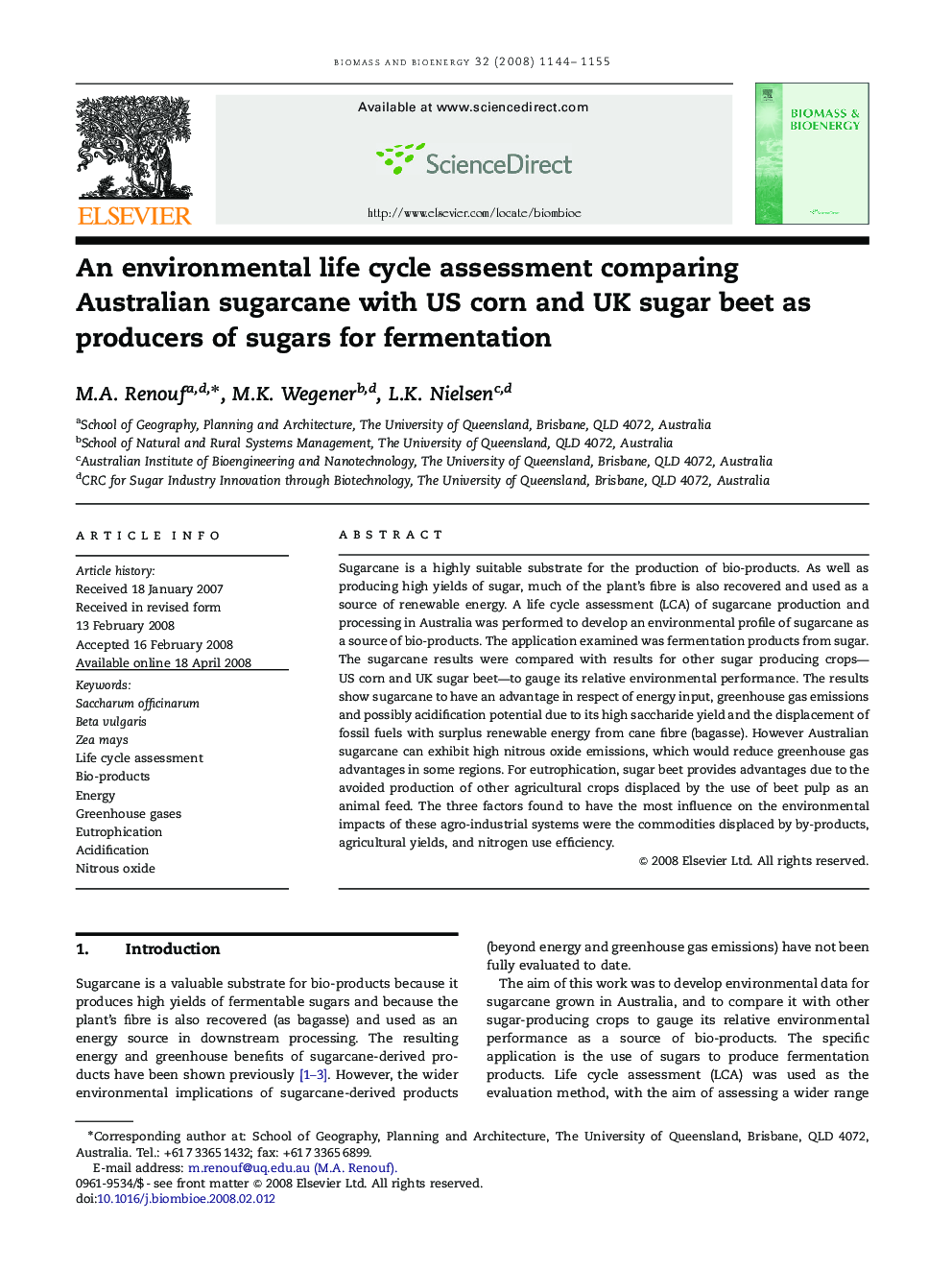| Article ID | Journal | Published Year | Pages | File Type |
|---|---|---|---|---|
| 678762 | Biomass and Bioenergy | 2008 | 12 Pages |
Sugarcane is a highly suitable substrate for the production of bio-products. As well as producing high yields of sugar, much of the plant's fibre is also recovered and used as a source of renewable energy. A life cycle assessment (LCA) of sugarcane production and processing in Australia was performed to develop an environmental profile of sugarcane as a source of bio-products. The application examined was fermentation products from sugar. The sugarcane results were compared with results for other sugar producing crops—US corn and UK sugar beet—to gauge its relative environmental performance. The results show sugarcane to have an advantage in respect of energy input, greenhouse gas emissions and possibly acidification potential due to its high saccharide yield and the displacement of fossil fuels with surplus renewable energy from cane fibre (bagasse). However Australian sugarcane can exhibit high nitrous oxide emissions, which would reduce greenhouse gas advantages in some regions. For eutrophication, sugar beet provides advantages due to the avoided production of other agricultural crops displaced by the use of beet pulp as an animal feed. The three factors found to have the most influence on the environmental impacts of these agro-industrial systems were the commodities displaced by by-products, agricultural yields, and nitrogen use efficiency.
